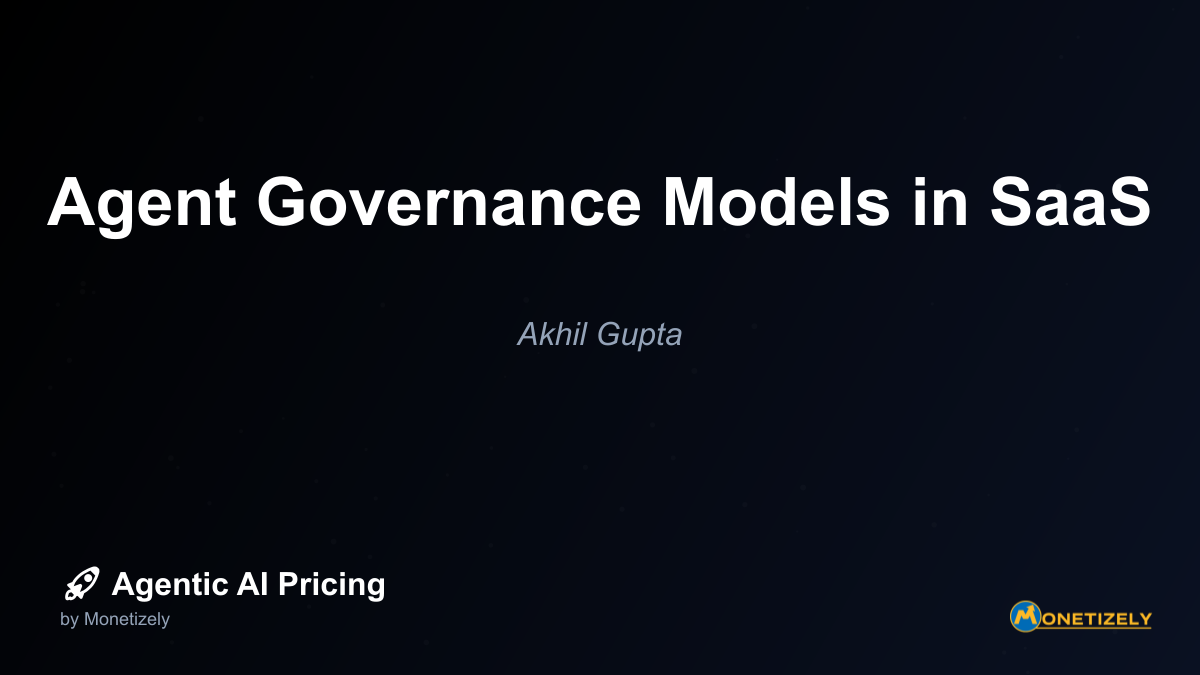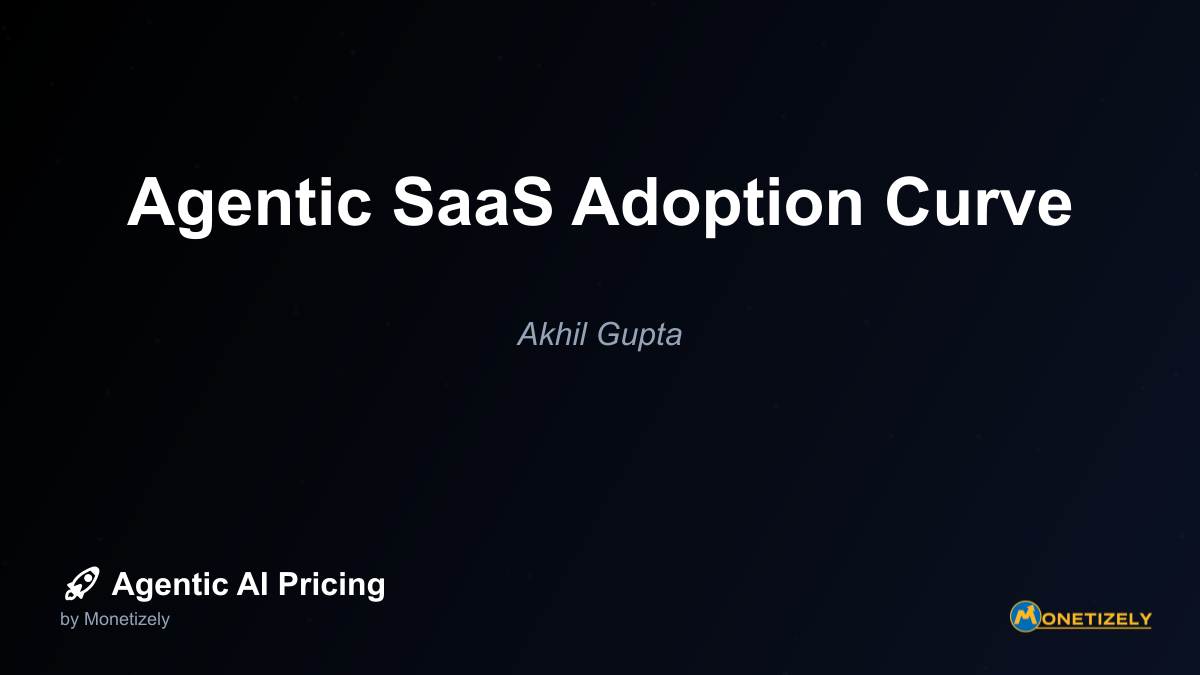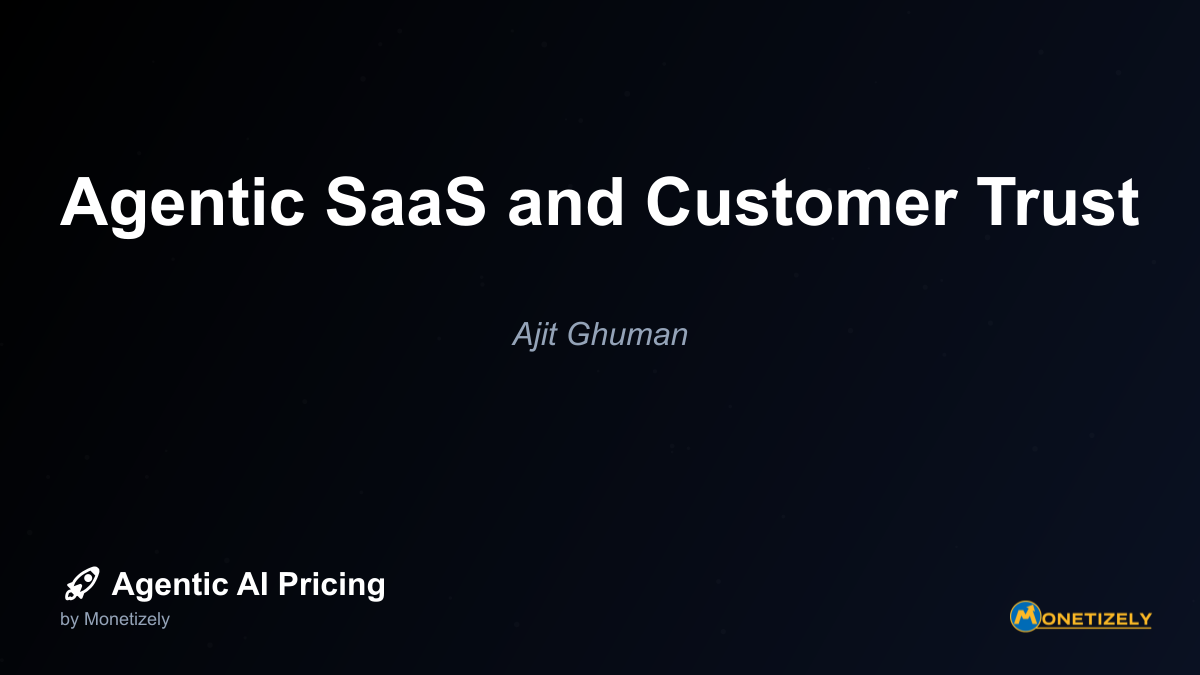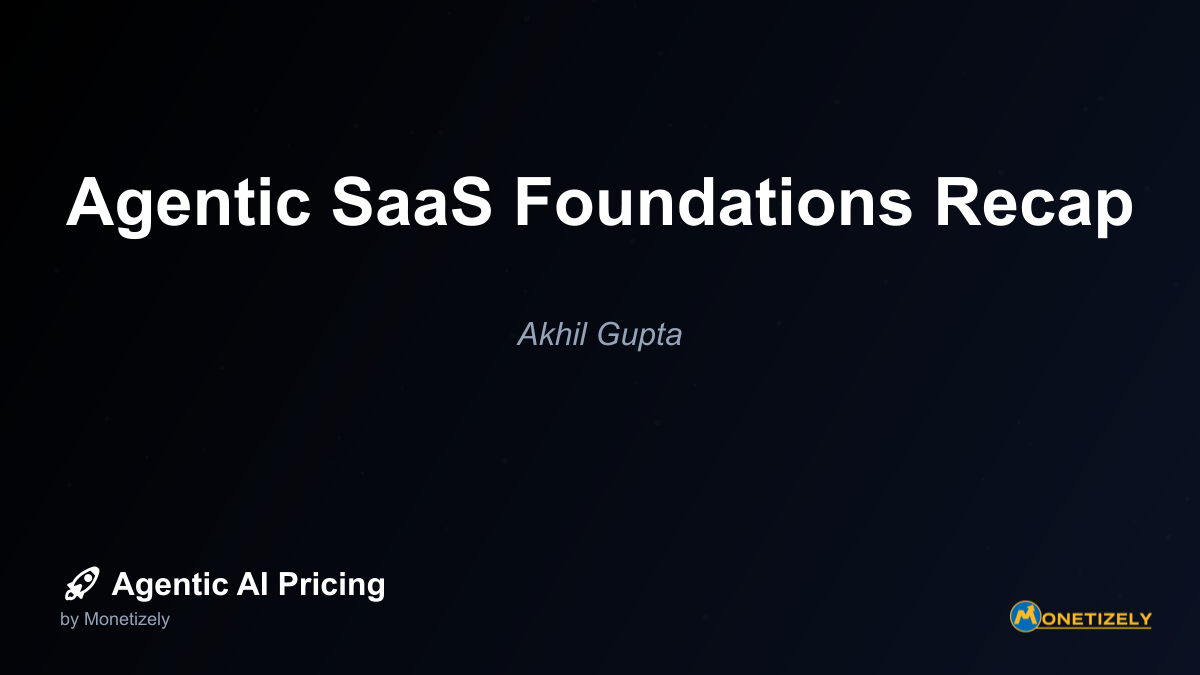· Ajit Ghuman · Agentic SaaS Fundamentals · 3 min read
Why Agentic SaaS Needs New Pricing
AI and SaaS Pricing Masterclass
Learn the art of strategic pricing directly from industry experts. Our comprehensive course provides frameworks and methodologies for optimizing your pricing strategy in the evolving AI landscape. Earn a professional certification that can be imported directly to your LinkedIn profile.
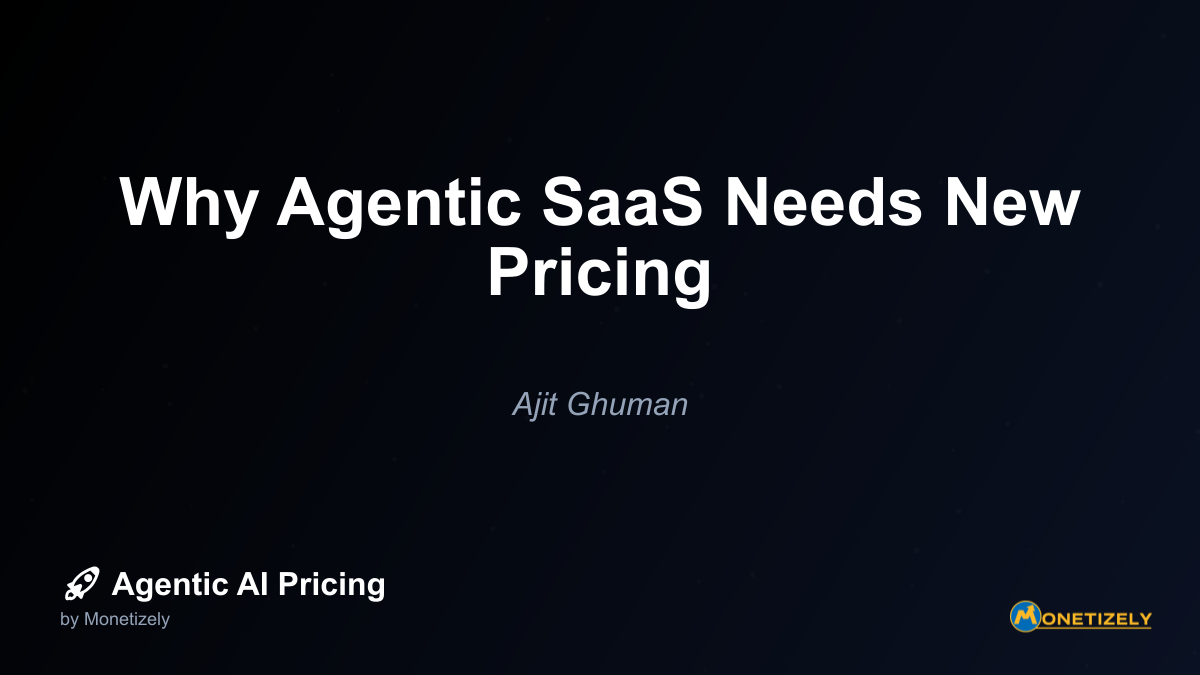
The shift to new pricing models carries profound strategic implications for companies developing and deploying agentic AI systems:
Competitive Differentiation Through Pricing Innovation
Companies that develop sophisticated pricing approaches aligned with agentic AI’s value creation mechanisms gain significant competitive advantages:
- Risk reduction for customers through models sharing outcomes rather than requiring upfront commitments
- Value alignment demonstrating confidence in the solution’s effectiveness
- Customer selection attracting organizations focused on business impact rather than cost minimization
Early adopters of innovative pricing can establish market leadership positions difficult for competitors to challenge. When pricing directly connects to value delivery, competition shifts from feature comparisons to business impact—typically favoring sophisticated solutions over low-cost alternatives.
Product Development Alignment
Pricing models send powerful signals about development priorities. When pricing reflects task complexity, autonomy levels, and business impact, product development naturally focuses on these dimensions rather than superficial feature expansion.
This alignment creates virtuous cycles where development enhances the most valuable capabilities, strengthening competitive position and enabling premium pricing. Companies can escape the feature-parity treadmill common in traditional SaaS markets.
Customer Relationship Transformation
Value-based pricing fundamentally transforms vendor-customer relationships from transactional to partnership-oriented:
- Shared success incentives align vendor and customer interests
- Ongoing value demonstration replaces one-time sales processes
- Strategic engagement elevates vendor status from supplier to strategic partner
This relationship transformation can dramatically improve customer retention while creating opportunities for expanded deployment. When vendors directly participate in customer success, both parties benefit from deepening engagement.
Financial Model Evolution
The transition to innovative pricing requires significant financial model adjustments:
- Revenue recognition patterns shift from predictable subscriptions to more variable outcome-based streams
- Customer acquisition economics change as upfront costs potentially decrease while lifetime value increases
- Valuation methodologies must adapt to different growth and profitability trajectories
Companies must educate investors about these changes while demonstrating the long-term advantages of value-aligned pricing. Early-stage companies particularly benefit from establishing innovative pricing before financial expectations solidify around traditional models.
Conclusion: The Imperative for Pricing Innovation
The emergence of agentic AI represents a fundamental shift in how software creates value. These autonomous systems deliver business impact through mechanisms fundamentally different from traditional human-operated software. This value shift demands equally transformative pricing approaches.
Companies clinging to legacy pricing models face increasing disconnection between the value they deliver and the revenue they capture. This misalignment creates vulnerability to competitors with more sophisticated pricing approaches while limiting growth potential.
Conversely, organizations embracing innovative pricing aligned with agentic AI’s unique value creation mechanisms position themselves for sustainable competitive advantage. By directly connecting pricing to business impact, these companies can:
- Capture fair value for transformative capabilities
- Accelerate market adoption by reducing customer risk
- Create aligned incentives driving continuous improvement
- Establish defensible market positions based on demonstrated outcomes
The transition to new pricing models presents significant challenges requiring investment in measurement capabilities, customer education, and financial model evolution. Despite these challenges, the strategic imperative remains clear: as agentic AI fundamentally transforms software’s value proposition, pricing models must evolve accordingly.
Companies that lead this pricing evolution will define the next generation of software business models. Those that delay risk finding themselves trapped in commodity positions where their remarkable technical capabilities fail to translate into sustainable business success. In the agentic AI era, pricing innovation becomes as critical as technological innovation in determining market leaders.
Co-Founder & CEO
Ajit is the author of Price To Scale, a top book on SaaS Pricing and is the Founder of Monetizely. Ajit has led and worked in pricing and product marketing at firms like Twilio, Narvar and Medallia. His work has been featured in Forbes and VentureBeat. Ajit regularly consults with software companies from Seed stage to post-IPO on pricing strategy. Ajit is also a highly-rated co-instructor for 'The Art of SaaS Pricing and Monetization' on Maven.
Pricing Strategy Audit
Let our experts analyze your current pricing strategy and identify opportunities for improvement. Our data-driven assessment will help you unlock untapped revenue potential and optimize your AI pricing approach.

